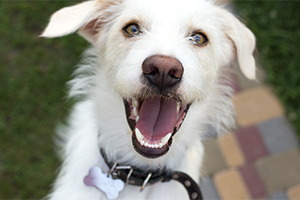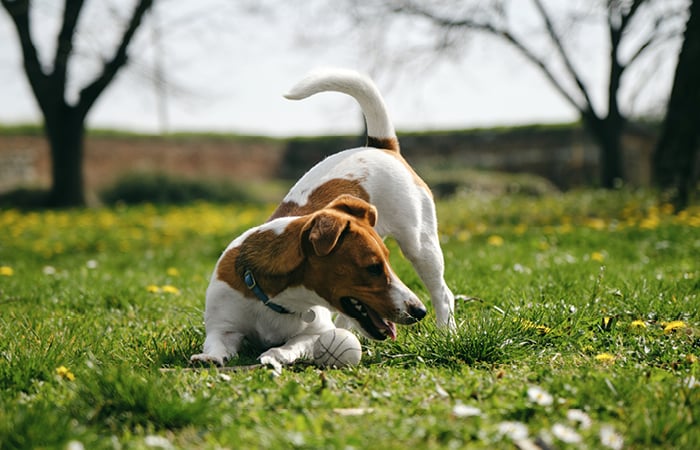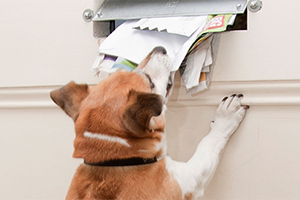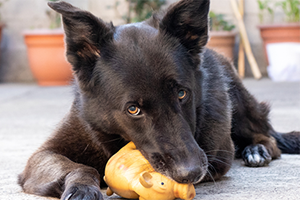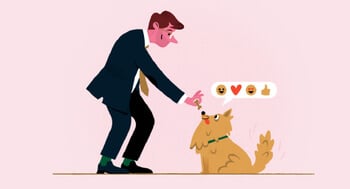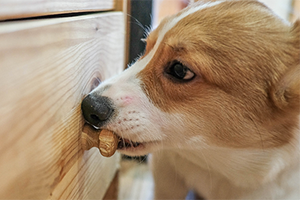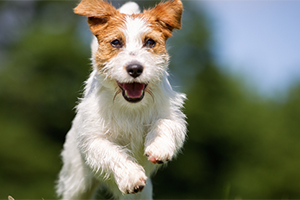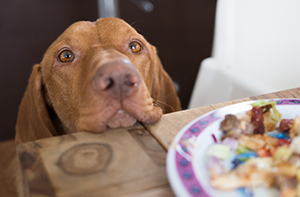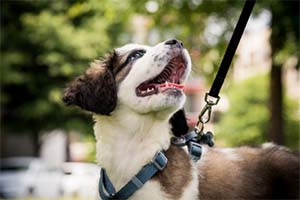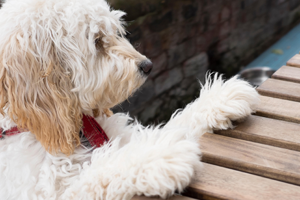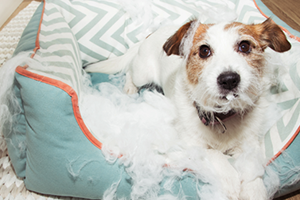Dogs are sociable creatures and there’s nothing they love more than attention, strokes and playing with their loved ones. Especially if you often have a lot of visitors, you may find your dog will be even more excited by all the extra noise and fuss. This can mean they start to jump up on you and your guests. While this can be endearing, there are definitely times when you’ll want to stop a dog jumping up.
If you always fuss and pet your dog when they jump up, you’ll be reinforcing the behaviour and they won’t know that it’s not OK to do so. This applies more than ever when your dog is a puppy, as they are so cute that everyone just wants to make a fuss of them – but they can get confused if you start to tell them off for the same actions when they grow up.

